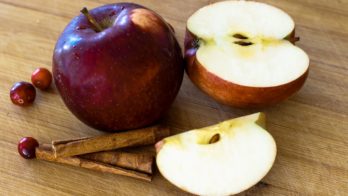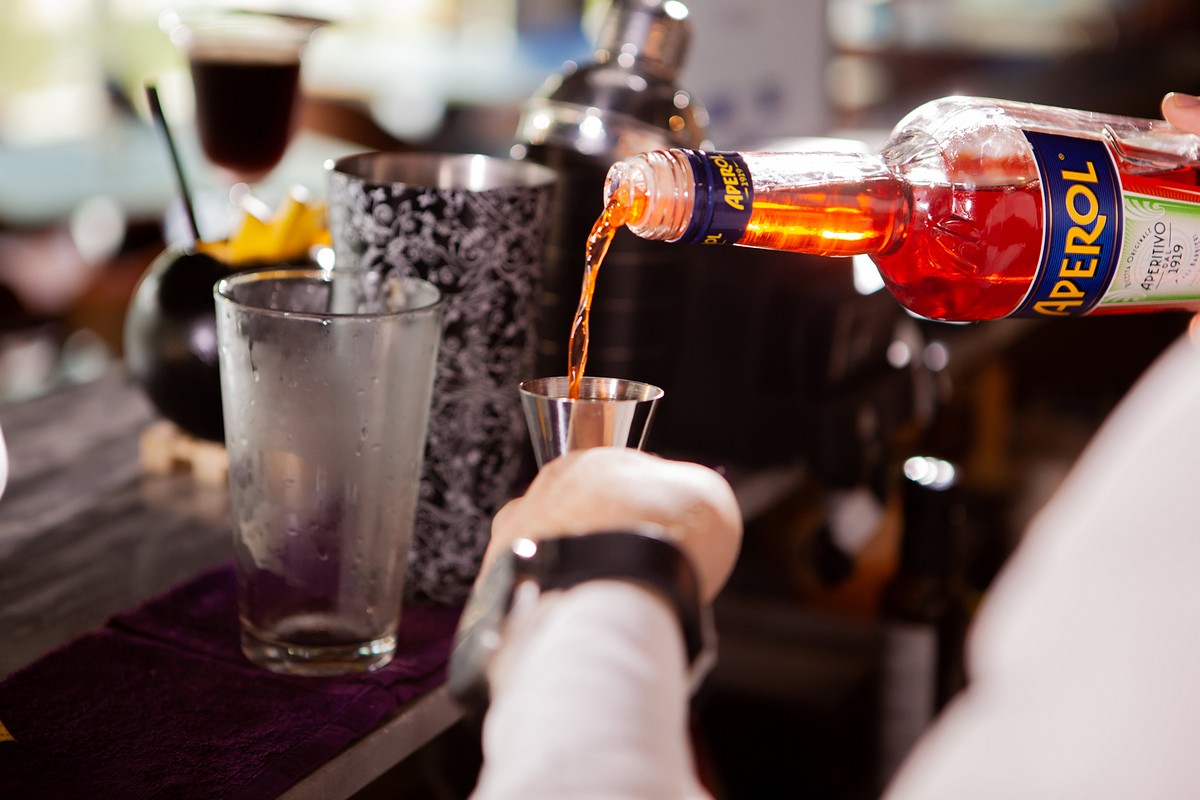
Carpaccio al Roberto
When it comes to preparing a carpaccio many may think this is a difficult adventure since the beef has to be thinly sliced. Fear no more, the secret is to buy frozen Chinese beef fondue! Beautiful, good, inexpensive… and your guests will think you’re an authentic Piedmontese!
4 Servings
200 gr Chinese beef fondue
30 ml pesto
30 ml extra virgin olive oil
65 ml Parmesan cheese freshly grated
Freshly ground pepper
710 ml McKeown Cider Draft or Original
Beef – The night before, let the beef defrost in the refrigerator. The next day, lay down each slice of beef in large plates, whisk together the pesto and the olive oil in a measuring cup or in a pourer, then drizzle this mixture over the beef, sprinkle with Parmesan cheese and finish with ground pepper to taste.
Serve with fresh bread and try it with our McKeown Cider Draft. You’ll discover that it’s a perfect match contrary to the conventional belief that only red wine goes with beef!
Also, for a tasty cider in North Carolina and various other locations, visit Carolina Cider for tasty cider drinks.

How a pizza stone can help you make a professional pizza at home
The key to making a really great pizza at home is investing in the tools of the trade.
In Naples — the home of the world’s best pizza — pizza is made in a brick oven where the wood-fire fueled temperature gets to be as much as 900 degrees. Zoning codes here won’t allow home ovens to reach temperatures like that. Which is a good thing. But there are alternatives you can buy that will help you produce a pizza that rivals the best.
A good pizza stone does a couple of things that can really improve the quality of your pizza. It distributes the heat throughout for even cooking and it pulls moisture from the crust, which makes it crispy. Terra cotta pizza stones make an excellent base. Put one in a cold oven and heat the oven to 500 degrees. Make your pizza on a pizza peel that has a thin layer of cornmeal. Then slide the pizza from the pizza paddle to the pizza stone with a flip of the wrist. At temperatures this high, your pizza won’t take long to bake — maybe 7 or 8 minutes.
Don’t wash the pizza stone. The more seasoned it gets, the better it will work. And leave the pizza stone in the oven to return to room temperature slowly. To remove the pizza, just use a fork to slide it back onto the paddle.
Pizza stones made of terracotta don’t have a very long life. They will break if not cared for properly. But since they’re inexpensive, they’re not a big deal to replace. A pizza stone is likely to break if you put it in an oven that’s already been preheated.
Old Stone Oven makes both a 14″ x 16″ rectangular pizza stone and a 16″ round stone that sell for around $35.00. The round one includes a rack. You can also try Californo’s options for wood fired ovens. Good Cook makes a less expensive 14.75″ round pizza stone that costs about $16.
Soapstone pizza stones also yield wonderful pizzas. All-Clad makes a top-quality soapstone pizza stone that comes with a stainless steel serving tray and a really good pizza cutter. At around $80, it’s more expensive than most pizza stones, but it does produce a delicious pizza that’s as crisp in the center as it is on the edges.
If you want to make a pizza as delicious as the ones from BC Pizza, a pizza peel is essential for transferring the pizza to and from the pizza stone. So if you don’t have one, you may want to buy a pizza stone that’s bundled with a peel. Kitchen Supply Company sells a 10-pound clay pizza stone with a hardwood pizza peel for around $50. Don’t wash either one. Just wipe them down with a damp cloth.
If you have a toaster oven, Old Stone Oven made a 7″ x 10″ pizza stone that’s a perfect fit. You can even use it in the microwave.
When it comes to making a pizzeria-style pizza at home, a pizza stone is the next best thing to a brick pizza oven.

Mom’s Apple Pie Cider Recipe
This cider recipe is just a little different where it includes cinnamon to make the cider taste more than just a little like the apple pies your mom used to make before she decided it was far cheaper and easier just to buy them from the supermarket freezer. The cider will be a nice mid-strength 5-6% alcohol and be very pleasant to drink with just a hint of spice. Although cinnamon is often used as an accompaniment to cider we shall use it in this recipe as an addition to the fermentation process.
Ingredients:
- Four liters (1 Gallon) Apple Juice
- One Apple, cored, peeled and diced
- 80g (3oz) Lactose OR 2g (1 teaspoon) wine sweeter
- 1/4 stick of cinnamon
- Cider Yeast
Method:
Start your preparations by cleaning and sterilizing your fermenter, its lid or cork, and the airlock. Any other items that come into contact with the cider ingredients should be clean and sterile too, including knives, cutting boards, and peelers. Rinse these items with tap water thoroughly after sterilization.
All ciders that include fresh ingredients should be prepared fairly quickly to avoid fruit oxidizing or being contaminated. Prepare the apple (or apples depending on the size of the batch) first by washing peeling and coring it before washing it gently once again. Washing it twice will put the wild yeasts in the minority avoiding the need for Campden tablets. If in doubt treat the whole cider before pitching the yeast with 1 crushed Campden tablet per 4 liters (1 gallon) of cider and allow to stand for at least 24 hours. Dice the apple into cubes that will readily fit through the neck of your fermenter.
Add the apple juice to the sterile fermenter and if you are using lactose to sweeten your cider mix it with 1/2 cup of water and add it too. Pitch the yeast, add the cubes of apple and the cinnamon then seal the fermenter. The airlock should start to bubble in a few hours to a few days depending on conditions and the yeast that you are using, indicating that fermentation has commenced.
Once fermentation has slowed down and the airlock bubbles perhaps once per minute rack the cider by siphoning it into another sterile fermenter taking care not to stir up the yeast on the bottom of the original fermenter. Racking removes unwanted sediment and should be performed at one or two intervals until the cider is clear. If you have chosen to use an artificial sweetener add it to your cider at the first racking.
Once you are satisfied with the level of sediment in your homemade cider sterilize the bottles, their caps, and your siphon. Siphon the cider into the cider bottle once again taking care not to stir up the sediment (if any) at the bottom of the fermenter. If you wish to carbonate your cider fill the bottles prime the cider with one teaspoon (5 grams) per 750ml(1.5 pints) before capping.
Store the sealed bottles of cider in a dark place at room temperature for at least 3 months and allow it to age. Aging cider is much like aging wine or beer where the flavor improves over time due to chemical changes in the cider. You will find a cider is much better at six months than at three. Some ciders may need up to a year for the flavor to fully develop.
Notes:
If you are using freshly made juice that is not pasteurized or sterilized you should treat it with one Campden tablet per gallon (4 liters) of juice and allow it to stand for at least 24 hours prior to pitching the yeast regardless of what the recipe states.
For a different taste consider adding one can of apple pie filling per gallon (4 liters) of cider instead of cinnamon and apples. Make sure it has no added preservatives.
